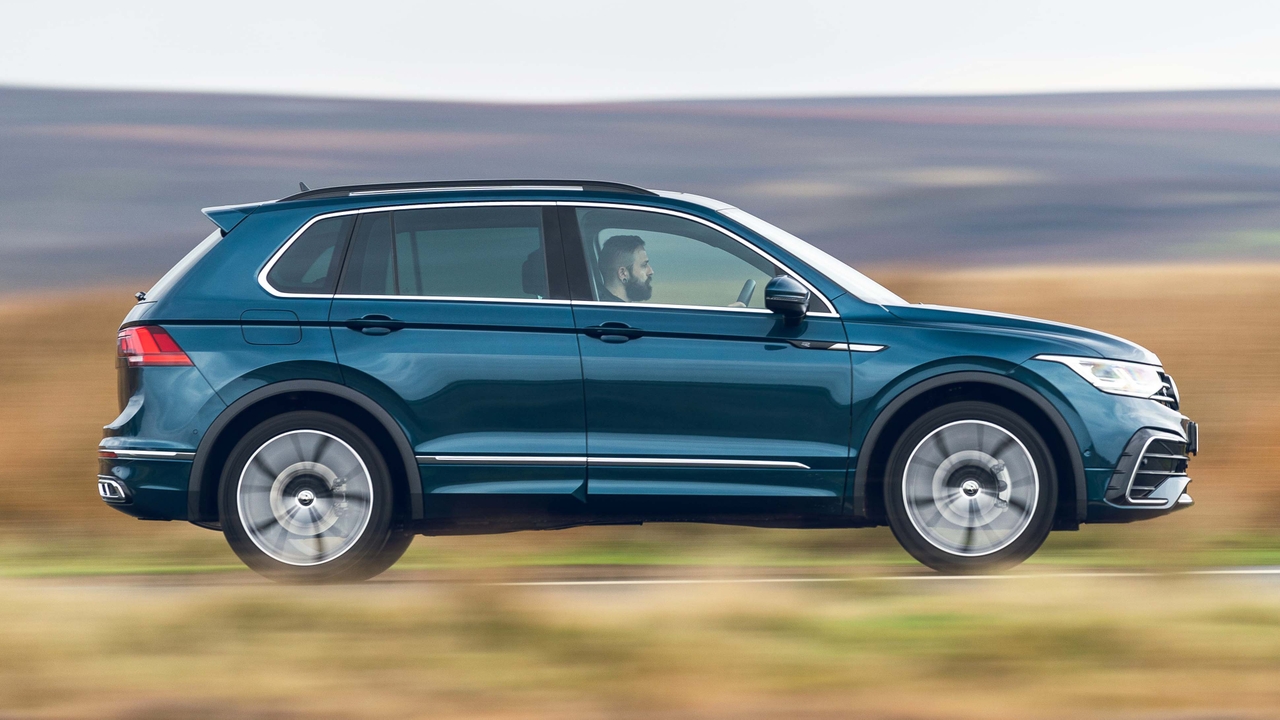
Volkswagen Tiguan review (2016-2024)
Gallery
Used Volkswagen Tiguan review (2016-2024)
The 2016-2024 Volkswagen Tiguan is an exceptionally good family SUV thanks to its roomy interior, capacious boot and a decent range of fuel-efficient engines. That’s all backed up by solid build quality – but rivals such as the Kia Sportage and Hyundai Tucson have caught it up in that department, and those Korean cars feel more high-tech inside while offering longer warranties.
The Tiguan’s biggest flaws are a set of temperature controls that are fiddly to use and an interior that’s depressingly grey. If you’re looking at a Tiguan then also consider the more affordable Skoda Karoq, the more striking Hyundai Tucson and, if you want a very similar car that’s a bit sportier to drive, check out the SEAT Ateca.
Interior and technology

The Tiguan’s not going to blow your socks off with creative flair in the cabin – it’s a bit grey and drab, though the materials are quite nice and the build quality makes you feel as if you’re getting your money’s worth.
Most models built since the 2021 facelift get a digital dashboard, which is sharp and really does modernise the cabin, while wireless Apple CarPlay and Android Auto are standard on all recent models, allowing you to beam your own music and navigation apps to the eight-inch infotainment screen.
It’s a little annoying that Volkswagen’s given the latest Tiguan the same touch-sensitive temperature-control sliders as the rest of its models, simply because they’re not as easy to use as a knob or button, and they’re not illuminated at night.
Your face will light up, however, when you see the amount of storage in the cabin. There’s a large lidded bin on the top of the dashboard, felt-lined storage bins in the doors and handy drawers under both front seats.
Practicality

The Tiguan’s a real sweet spot when it comes to size – at 4.5 metres long it’s not so big it’s awkward to park, but it’s still roomy inside. It’s worth noting that there’s a seven-seater version called the Tiguan Allspace, which is 4.7m long and is a closer rival for the Skoda Kodiaq.
There’s loads of legroom in the back of the regular Tiguan even for tall adults, and the seats slide and recline to help your passengers get comfortable. Small pockets on the backs of the front seats make for ideal snack or phone stowage, and a pair of USB-C sockets means everyone can stay charged.
Boot space is impressive too at 520 litres, and you can increase it to 600 litres by sacrificing rear-seat space and sliding the back seats forwards. Even with the back seats in their comfiest configuration, you’ll easily fit two large and two small suitcases into the boot with room to spare.
Engines and performance

Given Volkswagen’s history with diesel engines, it might not be so surprising to hear the Tiguan’s range is mostly made up of petrol engines – the 1.5-litre option with 130 or 150hp is your best bet for town driving, while there’s a 2.0-litre petrol option with 190hp which is the one to pick if you want four-wheel-drive.
If you want to turn your Tiguan into a hot hatch then you’re served by the 320hp Tiguan R, which gets from 0-62mph in just 4.9 seconds, and is guaranteed to make your kids either squeal with delight or… vomit from the sheer acceleration.
Company car buyers and city dwellers might best be served by the Tiguan eHybrid, which uses a 1.4-litre petrol engine and an electric motor to travel up to 30 miles on electric power alone.
On the diesel side, you can pick a 2.0-litre with either 150hp or 200hp, with the latter being four-wheel drive and able to tow up to 2,500kg. The 150hp version is the one to pick if you want the best fuel economy of up to 55mpg in the real world.
Driving and comfort

The Tiguan’s cabin is quiet and comfortable at motorway speeds, making it an ideal cruiser for family road trips – especially if you use the standard-fit adaptive cruise control.
On a bumpy country road you’ll notice how well the suspension irons out bumps – though this is most evident in entry-level Life models with their smaller alloy wheels. R-Line models get larger wheels which do make things a little more jiggly, but never quite to the point that you’ll get annoyed.
Whichever model you pick, the Tiguan handles sharply and has plenty of grip, but it can’t entertain a keen driver in the same way a Ford Kuga can.

























































